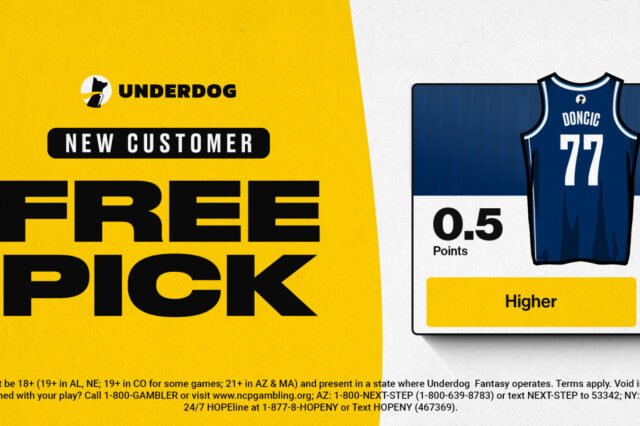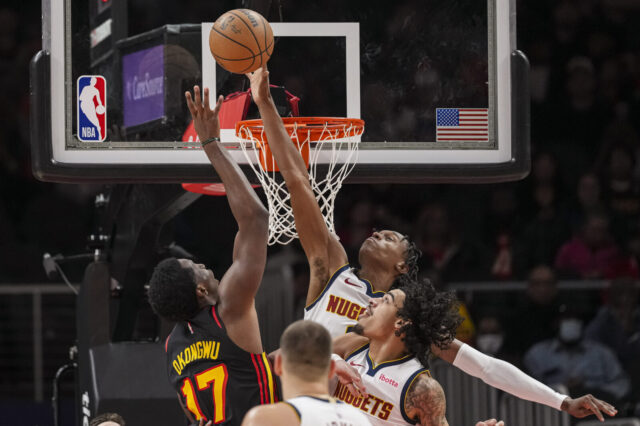In Jamal Murray’s first full season as a starter, the Canadian guard showed exactly why he was a seventh overall pick, averaging 16.7 points and 3.4 assists in 31.7 minutes as Denver’s nominal point guard. Tasked with playing a complementary role in the offense, Murray obliged, ceding the moment to Nikola Jokic, Gary Harris, and even newcomer Paul Millsap on occasion. Still, he showed his scoring potential, especially in clutch moments.
Most importantly was Murray’s combination of scoring and efficiency. Among all qualified guards 20 years old and younger in NBA history, Murray’s True Shooting percentage of 57.6 percent ranked third all-time.
This content is no longer available.
There were some negatives of course. Murray’s defense at the point of attack left much to be desired. Primary ball handlers for opposing teams hurt the Nuggets nearly every game, some of that on Nikola Jokic as the primary “catch” defender in the pick and roll, but much of it on Murray, who struggled to stay with skilled guards. Murray’s passing also raised some question marks. After a 10 assist game late in his 19-year-old season, the upstart guard failed to crack double digit assists in his 20-year-old season. While having Jokic as a facilitator at the center position provides certain advantages, he slowly became the only player capable of creating offense for others in the starting lineup. This was one of Murray’s most important developments in the offseason.
Fast forward to this season, and Murray has improved marginally as a decision maker but taken a step back as a scorer.
Baby steps as a passer
The assist to turnover ratio is generally a solid indicator of a ball handler’s decision making as a passer. While Murray’s passing skills are still coming along, his 2.00 assist-to-turnover ratio is a career high. He doesn’t spend as much time with the ball in his hands as a guard like Stephen Curry, but curiously, Curry’s assist-to-turnover ratio of 2.03 mirrors Murray’s 2.00 mark. It isn’t elite by any stretch, but maximizing offensive opportunities while limiting mistakes has helped Denver’s offense. The Nuggets hold the 10th lowest turnover percentage in the NBA, a major improvement over the previous year’s seventh highest. Murray struggles to make the right decision every now and then, but by and large, this is at least a step in the right direction.
Ever so slightly, the reads within the offense have improved. The Nuggets run their pet play to free up Murray off the ball, but with Murray’s man on his heels, Jokic and Murray turn the play into the dribble handoff pick and roll action. Murray reads Millsap’s defender before throwing a great pass to Jokic through traffic, something he still struggles with but has shown signs of growth.
Here, Murray is able to get downhill with his dribble in the middle of the lane. This is where he can improve. He gets the pass off to Juancho Hernangomez, but only just. This has to be an easier read for him going forward. The help rotation almost always comes from the opposite corner, and with Gary Harris, Paul Millsap, and Hernangomez all threats to shoot in the starting lineup, Murray has options if he can see the floor.
Here, Murray makes a bad decision. With the defender on his hip, the primary read lends a pass to the opposite wing where Hernangomez sits ready to fire. Juancho finished this game against New Orleans with 20 points and four three-pointers, yet none of his baskets were assisted by Murray. The expectation for Murray has to be to hit the open man, especially in a basic offensive concept. In addition, Murray has to know which players are shooting well and make an effort to set the table at times. Juancho is shooting nearly 47 percent on three-pointers this year. He’s as hot as a blowtorch, and good playmakers, even ones who have scoring on their minds at all times, have to hit the open man in that scenario.
Inconsistent scoring
As high as the highs have been (48 points vs the best defense, the Boston Celtics) the lows have been as low, if not worse. Murray has cracked 20 points just four times in Denver’s first 16 games, showing an inconsistency in perimeter shooting that helped make him a seventh overall pick. Ever since Murray’s outburst against Boston, he has averaged more field goal attempts (14.7) than points scored (14.2), showing some poor efficiency from multiple levels.
This content is no longer available.
Murray’s ability to get into the paint should be celebrated at this stage. One of the concerns with him as a prospect was his athleticism and burst off the dribble. I had no such worries, but enough people questioned his physical tools that many are surprised with his off-the-dribble skills. The biggest issue comes with balancing those more difficult, physically taxing plays with the easier opportunities that boost one’s efficiency.
This is an inefficient shot. Murray makes it, but there are better decisions to be made with the ball than a leaning 12-footer in the lane (Also, what is this spacing?).
At some point, the Nuggets guards will learn that passing the ball and relocating quickly is far better for efficiency purposes than taking that shot. Jokic is adept at finding cutters, and when cutters cut, they free up spot up shooters on the same side of the floor. Murray and Harris in particular will have a field day consistently relocating given how quickly Juancho Hernangomez cuts from the weak side.
Here, Murray’s rhythm is off. His footwork coming off the handoff in that situation generally leads to a smooth 1-2 catch-and-release, but here, the feet stutter. It’s almost as if he wasn’t sure what he was going to see on the handoff, realized he was open, and then tried to shoot.
These are the shots that have to fall consistently for the young guard. Easy looks from more efficient locations on the floor tend to break cold streaks. Right now, Murray is shooting a paltry 28.9 percent from behind the three-point line. On catch-and-shoot threes, he’s at 34.0 percent, while on pull-up threes, he’s at 21.1 percent. Finding scenarios where he can simply do less will help him improve in the short term.
It’s understandable though that the Nuggets want him to grow his game off the dribble. Hell, I wrote about it in July as a means to him becoming Denver’s second star. As Murray continues to expand his game to feature more skills of a star, the more difficult aspects of carrying a team can be a burden on his overall efficiency. 12-foot runners in the lane, turnaround jumpers, and off-the-dribble threes are just some of the shots he has attempted with more frequency this season. It’s one of the reasons why his impressive efficiency in his sophomore season (57.6 TS%) and dropped in his junior season (52.5 TS%).
Now, ironically, the best thing for Murray to do in order to break out of this slump is to simplify his game. Letting Nikola Jokic work for him at the top of the key and pass him open while he’s off-ball will make things easier for the 21-year-old. The star moves are great, but they are only a portion of the offense. Building on a consistent foundation of coming off screens, spotting up from deep, and getting all the way to the rim with the ball in his hands will take Murray’s game closer to Stephen Curry than where it is right now. Getting back to the basics is a must though.
Through these ups and downs have come massive performances in big moments. Murray’s show against the Boston Celtics proved he has the ceiling of an All-Star, perhaps even a game changer on a championship contender. Very few players have the ability to score 48 points against the top defense in the NBA, especially at the tender age of 21. Murray did it from everywhere on the court, just like a burgeoning star should. The question facing the Nuggets: can they afford to wait for the consistency to emerge? Should they?
Denver’s playoff hopes hinge on the answer.
This content is no longer available.


